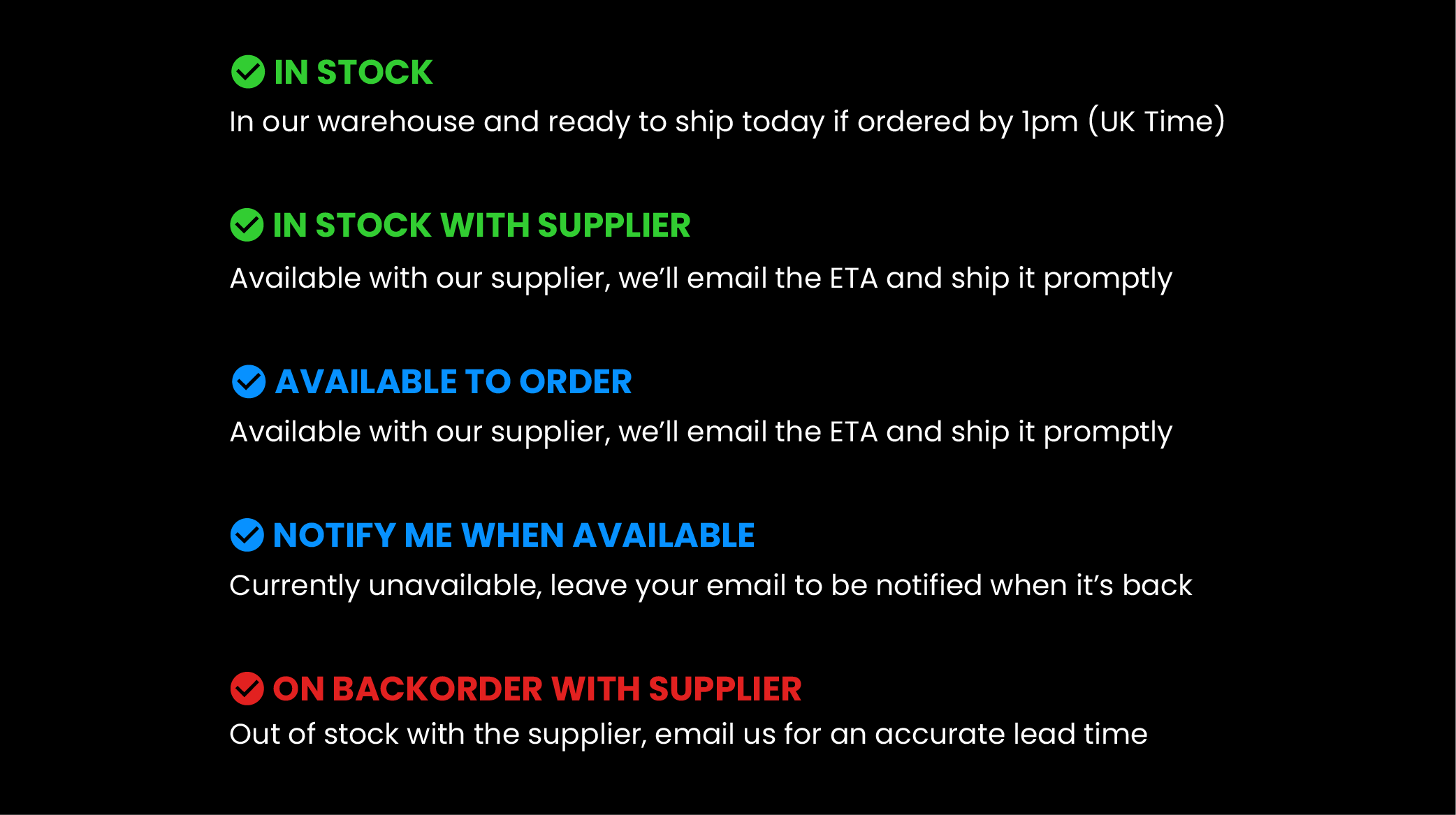Say you have a stock BMW F82 M4 (or any other car, really!), and you want to take it out for some track days. The first thing you might be tempted to do is to upgrade your engine components for more power! Maybe get a straight pipe exhaust system, or perhaps get bigger turbos so you can get faster lap times, right? It is true that having more horsepower and torque can be great for straight-line speed, but to really get the fastest lap times around the circuit and gain an advantage over your competitors, you have got to consider how your car handles around the twisties.

BMW M4 | 📷: Leon Seibert from Unsplash
A good track-focused braking system can drastically cut down on your lap times as you are able to brake a lot later when heading into a corner. That’s why one of the first things you should consider upgrading before showing up at the track is your factory braking system before anything else! Consider this article as a guide for what to consider when looking for brake components for use on the track. Here we will discuss the significance of the brake discs and the brake pads in a track-oriented braking system.
Brake Discs
One major issue that you will encounter when on the track is the heat that builds up in your brake discs from the constant braking. Throughout your track session when you are braking hard at the corners, a constant barrage of kinetic energy is being transferred to the rotors through friction to help slow you down. This energy converts to heat which accumulates on the surface of the discs. Normal street discs made of iron are not built for the punishment of these constant high temperatures, and as a result, will not be as effective at slowing you down as the sessions progress. There is even a risk of damage such as warping or cracking to occur to the discs from the prolonged heat.
To solve this issue, racing brake discs are purposely designed and built to be more resistant to heat to maintain their braking performance at these high temperatures. Track discs can be measurably larger in diameter as greater disc mass allows for greater capacity of heat.
One popular design that is used on the track is the 2-piece brake disc design. The benefit of this 2-piece design is they allow the rotor and the hat to expand at different rates. This helps to disperse heat and decreases the likelihood of the disc warping out of shape. One other benefit of a 2-piece setup is the improved ventilation and cooling capacity further improving the performance longevity. StopTech offers the 2-Piece Aero Front Brake Discs which is a perfect option if you are interested in upgrading for track days.
If you have the money to spend, you might be interested in a carbon-ceramic disc kit that is even more heat resistant due to the compound it is made from. It also has a higher friction coefficient compared to metallic discs, not to mention it is leaps and bounds lighter in weight. This is perfect for endurance racing as it offers the most braking performance at high temps and at a prolonged period of time. One drawback to this type of disc is that it is unsuitable for daily road driving. Since it is made to perform specifically at extremely high temperatures, braking at low temperatures isn’t as effective. So it is best to avoid the carbon-ceramic setup for your day-to-day grocery runs, as you would be sacrificing a lot of comfort and usability for less braking performance for use at low speeds.
According to Instagram user, @mattbinsteadracing, he recommends first-time track day go-ers to go for 2-piece brake discs purely because it works very similarly to a normal 1-piece disc setup where you will have a firm pedal from cold. This is due to the fact that 2-piece rotors will not need heat to get it working. On top of that, the cost for adoption is relatively low for 2-piece discs as compared to ceramics. This means that if you decide to upgrade them again along the line, you can do so. With ceramic discs, they need a certain amount of heat to get them working which can be worrying if you are not used to doing this already. For a more experienced user, if they are finding the limit of the 2 piece discs and if all other options are exhausted such as brake ducting, better quality of pads, better brake fluid, etc, Matt recommends that they would look at moving to ceramic discs for track use.
One other aspect that you can take into consideration is the type of surface on the brake discs. Typically, the surface of plain brake discs is smooth and does not have anything etched on the disc face. More performance-oriented discs have intricate grooves, slots and may even be crossed-drilled to help wipe away the debris that forms between the pad and the discs as well as ejects the gases coming off of the surface allowing for better braking. Furthermore, the ‘scraping’ action introduced by the slots can clean the pad, and the edges of the groves increase friction, albeit at the expense of pad wear. Groove designs vary, but one of the most notable is the ‘j hook' or ‘c hook,' which is designed to provide similar debris and gas ejection qualities while reducing vibrations.

📷: @mattbinsteadracing from Instagram
Brake Pads
The choice of brake pad material is crucial at providing the maximum stopping power to the brakes when driving hard on the track. Similar to the brake discs mentioned previously, street brake pads are not suitable to be used on the track. The reason being such pads do not offer enough friction needed to stop a car that is going at extremely high speeds as road cars do not achieve such speeds on a regular basis. You would need more aggressive brake pads which are purposely calibrated to have the highest friction coefficient possible. Pads can be made from a variety of compounds ranging from organic materials to semi-metallic or even fully metallic pads. Like the discs, there is also a ceramic option. All made to suit different purposes.
Organic or non-metallic pads are the typical street brake pads that you see on the road. They are soft on rotors, but they create a lot of dust, therefore their service life is limited and it definitely is not suitable for track use due to low grip performance at high speeds. Semi-metallic and fully metallic pads made from metals such as steel on the other hand are tougher, more fade-resistant, and longer-lasting than non-metallic pads, but at the penalty of greater disc wear, which necessitates replacement sooner. These pads are very popular for racing as they offer a considerable friction coefficient compared to the non-metallic pads, but they do require more force to be applied to fully compress while braking. Pads made from ceramic material offer the best overall in terms of durability, grip performance, and face resistance. However, these generally do not dissipate heat as well as metallic pads and are quite costly. Based on Instagram user @hutch.89, he recommends EBC or Ferodo brake pads as they are the more popular choice. EBC offers a range of brake pad compounds for racing such as the ultra-high-performance track & race RP-X™ material such as the EBC BMW F80 M3 RP-X Racing Brake Pads. Alternatively, you might be interested in the Endless MX72 Plus series track focus brake pads.
Final Thoughts
The braking system is one of the most important components in any car. Having sturdy brake discs and pads would not only help you shave off lap times but more importantly, it is a crucial safety mechanism that shouldn’t be taken for granted. Therefore, for the sake of the safety of you and those around you on track, it is always a good thing if you give some much-needed attention to your brakes before heading out to your local circuit. Hope this post serves as a guide to help you be more informed of what to look for in upgrading your braking system for track use.
Do keep an eye out for Part 2 of this article where we will discuss the importance of the Brake Lines & Fluids in the braking system when on track.





















